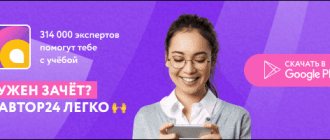An organized criminal community is the same organized group, but with a more complex structure. That is, the term “organized criminal community” completely absorbs the characteristics of an organized group. The legislator distinguishes the organized criminal community from organized groups using the characteristics of “stability” and “structure.” However, the law does not disclose their substantive meaning. It was also mentioned in the legal literature that the law does not differentiate the characteristics of a criminal community and a criminal organization.
GROWTH IN THE NUMBER OF CONVICTED FOR GROUP CRIMES
According to statistics from the Armed Forces of the Russian Federation, in 2014, criminal cases under Art. 208–210 of the Criminal Code, 116 were considered (or 3.9% of the total number of cases). The Rossiyskaya Gazeta, with reference to the Judicial Department of the Supreme Court of the Russian Federation, published information that over the past seven years the number of people convicted under Art. 210 Criminal Code increased by 2.5 times.
The results, of course, make you wonder: is everything here legally flawless? The press constantly publishes notes about the unreasonable interpretation of criminal norms and the tightening of punishment for less serious crimes through the use of the construct “organized criminal community.” The motives for imputing the guilt of the accused to members of an organized criminal community are quite simply explained: the opportunity to increase the period of preliminary investigation, an additional argument in favor of choosing a preventive measure, public outcry, statistical indicators of crime detection.
However, it should be especially emphasized that the legal uncertainty of the signs of “sustainability” and “structure” requires specification. After all, uncertainty entails different approaches to interpretation, which is unacceptable.
It is not possible to distinguish between the forms of complicity “organized criminal community” and “organized group” with a strict interpretation of the articles of the Criminal Code, since it is necessary to determine the substantive meaning of the signs “stability” and “structuredness”, but they are not defined in the criminal law.
In the legal literature, the question of distinguishing these criminal legal structures has long been asked. However, to date there is no common understanding and clear methodology that could be adopted into the Resolution of the Plenum of the Armed Forces of the Russian Federation dated June 10, 2010 No. 12 “On the judicial practice of considering criminal cases involving the organization of a criminal community (criminal organization) or participation in it (it)” (hereinafter referred to as Plenum Resolution No. 12).
From practice.
Confirmation of what has been said is the position of the Supreme Court of the Russian Federation in one of the criminal cases. The panel of judges gave the following explanation: “Thus, a criminal community (criminal organization) presupposes the presence of mandatory characteristics - cohesion and organization.
Within the meaning of the law, cohesion is understood as the presence of common goals among members of an organization, intentions that transform the criminal community into a single whole, the presence of established connections, organizational and management structures, a financial base, a single cash register from contributions from criminal activities, conspiracy, a hierarchy of subordination, uniform and strict rules of relationships and behavior with sanctions for violation of the unwritten charter of the community" (appeal ruling of the Supreme Court of the Russian Federation on September 14, 2015 in case No. 67-APU15-30).
The question arises: how to understand the judges’ reference to the sign of cohesion if the legislator excluded from Art. 35 of the Criminal Code, is this a differentiating feature for an organized criminal community when distinguishing from an organized group? It turns out that even at the level of the Supreme Court of the Russian Federation, judges have little understanding of what constitutes an organized criminal community.
We will analyze each of the criminal legal structures in detail.
Instead of an introduction
If we compare the Criminal Code of the Russian Federation with any earlier version of the domestic criminal law, starting from 1845 - with the “Code on Criminal and Correctional Punishments” of the Russian Empire, then it is easy to see that the current Criminal Code of the Russian Federation is the most stringent of all.
However, as is known, the severity of punishment has never correlated with the level of crime. Under the English king Edward VI, who reigned in the 16th century, executions were carried out for the slightest thefts, but the largest number of them occurred precisely when people gathered near the gallows. During one reign of Edward's heir, the good Queen Elizabeth, to whom our Ivan IV the Terrible wooed, 38 thousand people were executed by court. Ivan the Terrible never dreamed of this (3-4 thousand people were executed under him). Why were the courts so rampant during this period in English history? Remember the “fencing” that was known from the school curriculum and took place during that period. At that time they said that “the sheep ate the people.” There were too many peasants in England, and the industrial revolution had not yet attracted them to the factories. The peasants who lost their land, were unable to feed themselves, the first “lumpen”, were simply killed in court.
At the beginning of the 19th century, England was the leader in the number of criminal offenses punishable by death. Over the years, their number ranged from 160 to 240. Hanging was prescribed for logging in forests, for any poaching, for theft from shops in an amount over 5 shillings, any theft in a church, theft at a fair in an amount over 1 shilling... They were executed for misdemeanors purely formal properties: vagrancy, begging, etc. But crime did not decrease—neither violent nor economic. There were neither social nor economic conditions to reduce it. And the sword of justice threshed the English in vain. Only the industrial revolution and the mass exodus of excess people to overseas colonies stopped the work of the executioners. The state again needed people, and people were again at a premium.
ORGANIZED GROUP
An organized group as a form of complicity was first mentioned in the decree of the All-Russian Central Executive Committee of June 20, 1919 “On their removal from general jurisdiction in areas declared under martial law.” Thus, the concept of “gang” was legislated, which consisted in the permanent nature of the community and in the conversion of criminal activity into a craft by members of the gang. The “gang” (organized group) did not stand out from the criminal community and was interpreted as a variety of the latter.
Subsequently, an organized group as a form of participation was enshrined in Art. 17.1 of the Criminal Code of the RSFSR: “A crime is recognized as committed by an organized group if it is committed by a stable group of persons who have united in advance to commit one or more crimes.”
The current criminal law has fully adopted the concept of an organized group laid down in the Criminal Code of the RSFSR. In paragraph 3 of Art. 35 of the Criminal Code contains the following definition of an organized group: “A crime is recognized as committed by an organized group if it is committed by a stable group of persons who have united in advance to commit one or more crimes.”
R. R. Galiakbarov understands an organized group as “an association of two or more persons who have previously organized themselves to commit one or more crimes.”
V. Zenin and L. Kruglikov believe that an organized group is distinguished by a high degree of organization, stability of the composition (the presence of a permanent “core”), cohesion of group members, careful distribution of roles, sometimes with a kind of “specialization” of the criminals included in its composition.
N. Tkacheva and M. Minenok propose to understand an organized group as a stable, cohesive association of individuals with specific criminal skills, connections, and experience, organized for the systematic commission of identical or homogeneous crimes.
The official interpretation of an organized group is contained in paragraph 15 of the resolution of the Plenum of the Supreme Court of the Russian Federation dated December 27, 2002 No. 29 “On judicial practice in cases of theft, robbery and robbery”: a stable group of persons that includes an organizer (leader) who has distributed functions among members of the group in preparation for committing a crime and carrying out criminal intent, as well as a pre-developed plan for joint criminal activity.
However, the following questions remain unclear: what degree of organization forms a stable group? Does the organizer (leader) himself perform the functions of an executor of criminal activity in the group, or does he only carry out criminal activity in the form of making management decisions?
Reasons for tightening the law
Do the Russian economy need citizens?
Big question. It seems that the state does not objectively need an extra citizen of any age; foreigners are more convenient. Therefore, the citizen is not dear to the government apparatus, and the draconian, if not barbaric, criminal legislation objectively confirms this fact, just like in medieval England. And this thesis is confirmed by all punitive practice for economic crimes. Moreover, in modern Russian society, the danger of the consequences of strict punishments for economic crimes lies not only in the fact that active, passionate individuals who are useful to the economy and society will disappear from the working population for a long time. Even without arrest during the investigation, a person is not able to work productively. The greater danger lies elsewhere.
In a society in which a significant percentage of citizens have been through prisons, including outrageously long pretrial detention in pre-trial detention centers, a general tolerance for criminal behavior inevitably arises. There are already too many released people in our population. They have become commonplace and people are used to them.
This banker was arrested, that director was/was not released on parole: daily headlines in the media. There is even a saying among businessmen that is completely incomprehensible in any other state: “A criminal record does not affect credit.”
The USSR fell ill with this syndrome in the post-Stalin years. The “enemies of the people” who were released from prison gradually turned from pariahs into heroes[1], and along with the rehabilitation, it was from the liberated intelligentsia that criminal jargon and obscenities entered the colloquial and even literary speech of the entire society. Does every Russian know what “authority”, “showdown”, “bazaar”, “mess”, “lawlessness”, “common fund”, “brotherhood” are? And the expressions “my bad”, “don’t worry”, “out of line” and many other examples of thieves’ “give a damn”, although sometimes in erroneous interpretation, have become everyday. Using a word or phrase from “feni” from a television screen is a common thing even for ministers and deputies.
[1] The authors are not at all against the rehabilitation of political prisoners. Under the prevailing conditions, it was fair and inevitable. We are simply stating the fact of its negative impact on society as a whole.
Fenya as the language of the entire people is not so bad. The trouble is when punishments for crimes in the field of business activity can be equal or even higher than punishments for domestic murder and any attack on personal health. Such a society gradually and inevitably becomes tolerant even of violence. And not only to other people's violence. For this reason, more and more citizens are allowing violence in their personal behavior.
Criminology, as a science that is most important for understanding social processes, has never put rapists on the same level as persons who have committed crimes in the sphere of entrepreneurial and even pseudo-entrepreneurial activities.
To better understand the problem, I will give a school example from a university criminology program. A person who causes death in an accident cannot be called a murderer. There will be too many killers around, and premeditated murder, having dissolved, will become commonplace.
Leader of the organized crime group
The leader occupies a special place in the structure of the group. In most cases, he is simultaneously the organizer of all crimes committed by the group.
The leader performs the following functions:
- determines the main goals and objectives of the group’s activities;
- plans crimes and distributes roles between participants in the crime;
- serves as treasurer;
- coordinates the interaction of attack participants and all members of the formation;
- attracts new participants;
- establishes and establishes relations with authorities;
- develops a strategy to counter ongoing investigations, etc.
In some cases, other members of the so-called “backbone” of the group also participate in the leadership and organization of the formation’s activities.
There are 2 types of organized crime groups leaders:
- an active member of a criminal group who is charged with the responsibility of making decisions in situations that are important for the activities of the group;
- “shadow leader” - a person who does not directly participate in the atrocities committed, remains unknown to ordinary members of the organization and gives orders and advice to the active leader of the criminal group.
Leaders of the second type, as a rule, are not identified as a result of investigation.
What type of organized crime groups can there be?
All organized criminal groups are divided into the following types:
- Simple. This group has a primitive structure with members ranging from 2 to 4 people. Decisions in a simple organized crime group are made collectively. As a rule, there is no clearly defined leader. The lifespan of such a formation usually does not exceed 3 years, after which the participants in most cases change.
- Structural organized crime group. This formation has greater stability than a simple group. There is a hierarchy among the participants. Management of the group is concentrated in the hands of the leader. Structural organized crime groups are engaged in professional thefts, robberies, fraud, extortion, smuggling, and robbery.
Classification of criminal groups
OCGs can be classified according to different criteria. For example, according to the focus of crimes, groups are divided into the following types:
- Common criminals. Such organized crime groups, in turn, are also divided into two subtypes. The former do not use harsh force and are engaged in such types of criminal activities as, for example, drug trafficking. OCGs of the second subtype are focused on armed methods. These are gangster-type formations.
- Operating in the field of economic crime. Some of them commit atrocities within 1-2 economic or financial structures. These are closed organized crime groups. Open groups strive to expand their area of influence.
- Mixed.
OCGs are also classified depending on whether they have corrupt connections. They are divided into the following types: those with such connections and those without them.
Depending on the territorial zone of activity, organized crime groups can be local, interregional and international.









